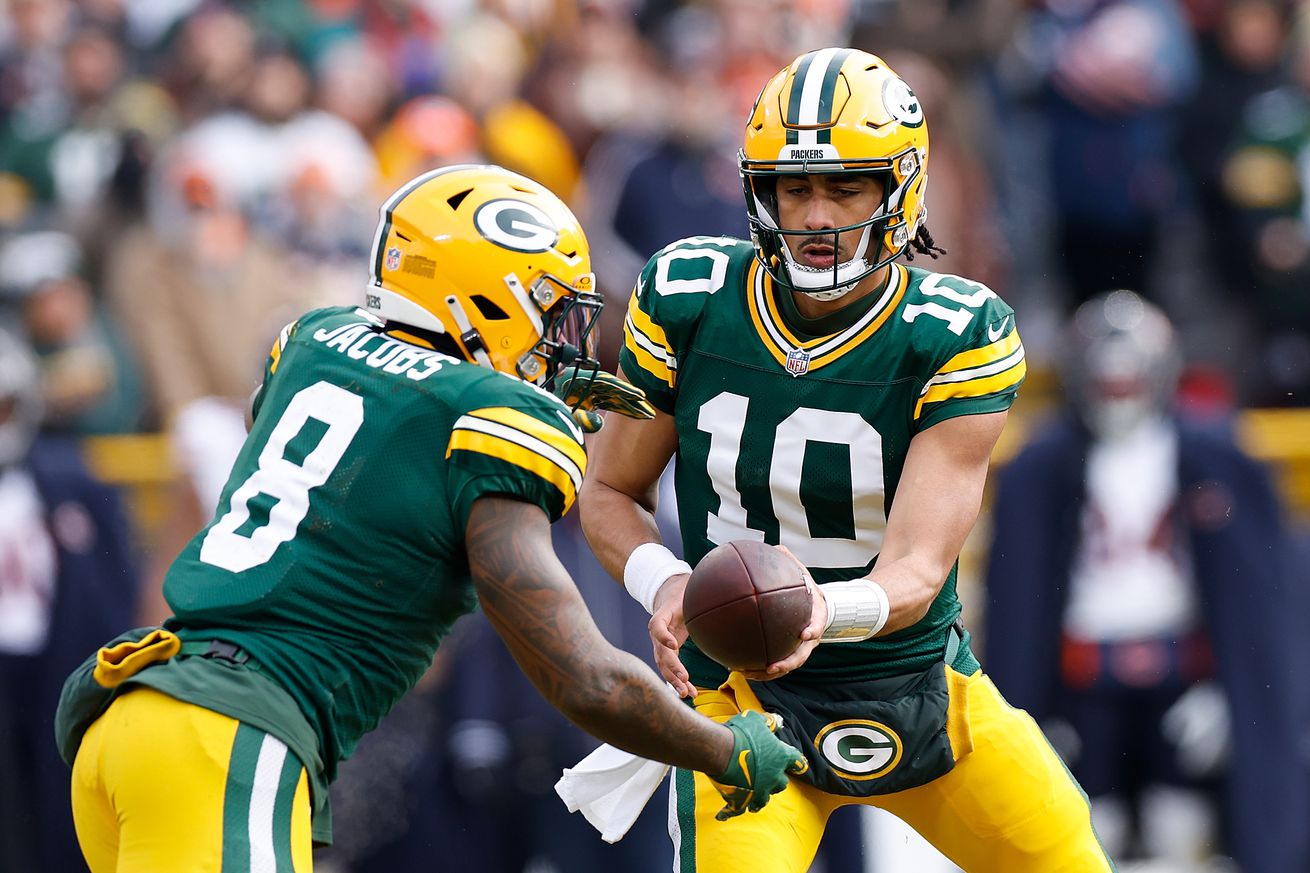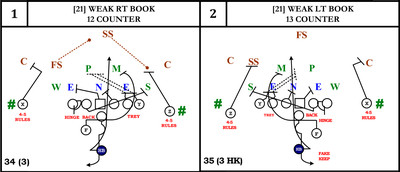
Today’s film room breaks down the basics of a key component of the Packers’ running game.
While the Green Bay Packers’ most efficient run game concept in 2024 was Duo, we’re going to focus on their 2nd most efficient run game concept in the next two articles: the counter run scheme. In 2024, counter runs accounted for 5.1 yards per attempt, 225 total yards, and a 34.1% first down rate (far more than any other run scheme they deployed), and a 43.2% positive play rate. In this article, we’ll look at what the counter run scheme is and what it hopes to accomplish.
But what is the counter run scheme?
Counter runs are the easiest way to kill the run pursuit of an overly aggressive defense that is often able to get penetration into the backfield. Counter involves two lead blockers, usually the backside offensive guard and a fullback or tight end, or in some cases the backside tackle. While the rest of the line blocks down, the lead blockers kick out and lead the running back through a newly created gap.

The counter is an old school gap scheme run that all teams run from traditional under center and mostly two back 21 personnel formations. The backside guard usually trap blocks or kicks out the defensive end or first upfield defender while the rest of the line down blocks away from the point of attack. The use of a fullback adds an extra blocker to lead up through the hole, the down blocks, and the trapping guard.
Elements of the counter run
The initial fake/misdirection

The success of the counter run depends on delivering an authentic misdirection fake. The success of this deception depends on the offensive line’s correct initial movement toward the play side which is vital for deceiving defensive players.

The running back adds to the deception by taking a “rocker” step away from the play side before reversing back toward the play side and taking the hand off.
The offensive line blocks down away from the play side while a guard pulls toward the direction the run will end up hitting. During the handoff, the quarterback reverses out away from the play side before moving the ball to the play side hand before the handoff. The defensive reaction becomes automatic due to the unified action between the offensive line movement, the quarterback reverse-out, and the running back rocker step all in the same direction initially.
Creating Favorable Blocking Angles
The play instantly changes direction to attack the defense’s opposite side once the flow is declared and the defense’s initial steps are the opposite way. The play executes two essential components during this phase.
The distinguishing feature between counter and something like “trap” or “power” is that counter uses two lead blockers, one to block the edge, and one to lead up through the hole at the point of attack. On trap, the guard would usually block the edge after pulling. On power, the guard leads through the hole without the extra puller. It should be noted though, that this isn’t always the case but are general rules, and much depends on the defensive front seven alignment.

The blocking angles become beneficial because of the linemen’s pulling action. Moving as lead blockers, they begin their play from inside the formation before crossing it. The path enables them to reach the attack point at full speed while coming from an unfamiliar defensive perspective. Their main responsibility is to drive defensive ends or first linebackers toward the initial play side fake in order to block their path toward the edge.
The linemen on the back side who stay in position perform basic blocking duties by using “down” blocks to seal defenders toward the play side. The defensive players face challenges from the blocking scheme because the defensive team aggressively pursues the initial fake. The blockers’ main responsibility consists of brief obstruction or protective maneuvers to let the RB pass by.

The blocking scheme works by having pullers strike from behind while the linemen on the back side create interior barriers which gives the RB and pullers an advantageous position against defenders who need to stop their forward motion and redirect to tackle them from the side and behind.
Why it’s effective
Exploiting Overpursuit
The counter run depends on psychological manipulation to achieve its success. Defensive players, particularly linebackers and defensive ends, receive training to perform fast reactions against offensive movement.

The defensive players naturally rush toward the play side after observing the QB’s action and the RB’s movement together with the offensive line’s first step that indicates a play heading in that direction.

The counter run exists to deliberately induce defensive overreactions and using them as a strategic advantage. When defensive players rush aggressively to the play side they create empty spaces on the back side of the field because they abandon their defensive responsibilities.
A pulling guard or guards who kick out the end, together with backside linemen who seal inside, create an open space in the defensive vacuum. The running back enters the wide-open area that defenders were occupying until their aggressive pursuit of the initial fake caused them to abandon it.
Final thoughts
The counter run continues to be a fundamental attack because it provides essential tactical benefits to the offense. Fast-flowing defenders experience hesitation during this play, reducing their downhill speed and aggression for the next plays.
The effective execution of the fake creates massive cutback opportunities, which can result in explosive long runs when defenders fully commit. The system optimally uses athletic linemen by allowing their agile guards and tackles to display both power and speed in open blocking situations.
The running play acts as a crucial defensive-neutralizer because it makes defenders stay honest about their defensive alignment, thus preventing them from focusing exclusively on specific types of runs. The system maintains enduring success because it combines deceptive tactics with strategic blocking angles and forceful defensive overreactions.